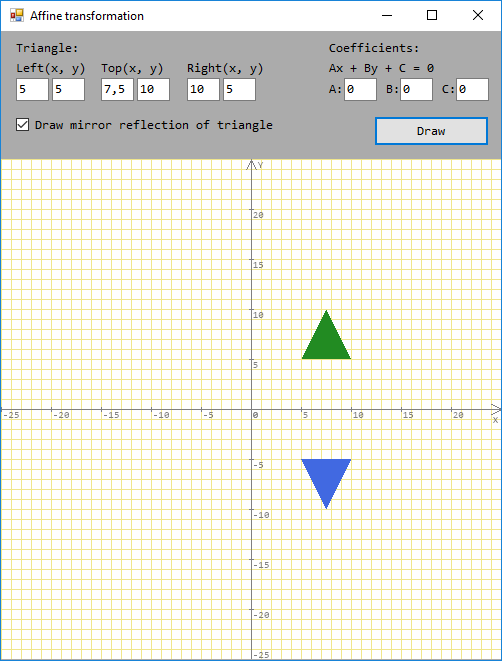(sorry for my english)
The task:
A triangle is specified. To realize its motion on the basis of mirror reflection with respect to an arbitrary line ax + by + c = 0, the coefficients of which are entered by the user.
Already done:
I read from the fields on the form the coordinates of the three points of the triangle.
Putting them into objects of class Point (left (x, y), top (x, y), right (x, y)).
Make an array of points from the points of a triangle:
Point[] points = new Point[3] { left, top, right };
Draw a coordinate system:
DrawField();
DrawCoordinateSystem();
Draw a triangle:
graph.FillPolygon(Brushes.ForestGreen, points);
Make a mirror reflection of the triangle:
Point[] pointsCopy = (Point[]) points.Clone();
for (int i = 0; i pointsCopy.Length; i++)
pointsCopy[i].Y = -pointsCopy[i].Y;
graph.FillPolygon(Brushes.RoyalBlue, pointsCopy);
Read the coefficients (a, b, c) from the fields on the form for the equation ax + by + c = 0.
Question:
Tell me how to move it further relative to the line ax + by + c = 0 ?
